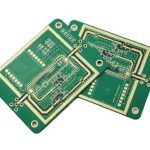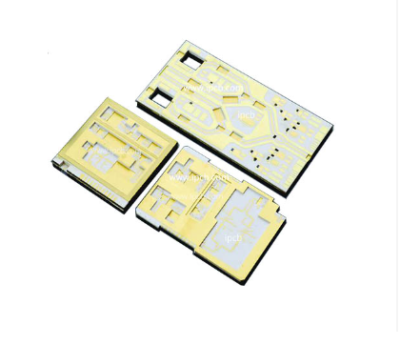PCB side plating, also known as edge plating, is copper plating from the top to the bottom surface of the board and along (at least) one perimeter edge.PCB side plating reduces the likelihood of device failures by providing a strong connection to the PCB, especially for small PCBs and motherboards. Examples of this plating are commonly found in Wi-Fi and Bluetooth modules. During manufacturing, the edges to be metalized should be milled before the copper plating process. Appropriate surface treatment is applied to the PCB edges after copper deposition. PCB printer
1. When to use side plating?
(1) Need to improve the conductivity of the PCB
(2) Connections need to be made at the edge of the PCB
(3) PCBs need to be protected from lateral impacts
(4) Secondary PCBs are connected to the motherboard through the edge
(5) Need to solder the edge to improve assembly
2. PCB side plating type
(1) Wrap-around edge plating: Wrap-around plating routes the metal edges along the sides after drilling, and the routing process exposes the PCB sidewalls to chemically-plated base copper so that it can be applied at the same time as the holes are drilled.
(2) Copper Board Edge: To avoid damaging the copper, a minimum distance between copper features and the PCB edge is usually required, i.e., 0.25 mm on the outer layer with breakout; 0.40 mm on the inner layer with breakout; and 0.45 mm on all layers with V-cut indentations. Copper-to-board edge distances should only be used for flat surfaces and large copper areas where any minor damage to the copper will not affect board performance. Tracks should not be located within the minimum distance from the board edge to avoid damage.
(3) Board Edge PTH: Plated holes cut at the edge of the board for joining two PCBs by direct soldering or through connectors. for joining two boards by direct soldering or through connectors. the edge of the PCB must have enough free space to hold the board in the production panel during manufacturing. The top and bottom layers must have pads to hold the plating firmly in place on the board.
(4) Rounded Edge Plating: Rounded edge plating means that most or part of the PCB or cutout is plated from top to bottom. The main purpose is to establish a good ground for metal enclosure or shielding. To produce this type of board with this plating, the board profile is milled before the through-hole plating process. Since the plating needs to be fixed within the production panel during processing, 100% edge plating is not feasible, and placing routing tabs has to be problematic. For rounded-edge plating, the choice of electroless nickel gold is the ideal finish.
PCB edge plating enhances current conduction, ensures signal integrity, improves electromagnetic compatibility, and prevents electrostatic damage.
Contact opcba.com to get to know more details. PCB printer





